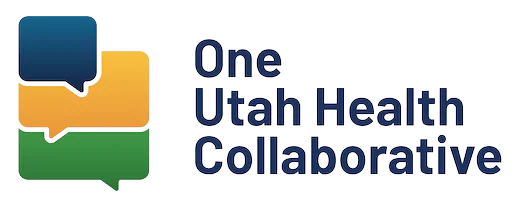New Report from One Utah Health Collaborative Highlights Five-Year Trends in Healthcare Quality and Patient Experience
SALT LAKE CITY, UT — The One Utah Health Collaborative has released a new report evaluating Utah’s healthcare performance on nationally recognized benchmarks for clinical quality and patient experience from 2019 to 2023. The analysis draws on standardized metrics from the Healthcare Effectiveness Data and Information Set (HEDIS) and the Consumer Assessment of Healthcare Providers and Systems (CAHPS) to highlight where Utah is improving, where gaps remain, and what these trends mean for care quality, equity, and healthcare costs.
The report tracks statewide trends in preventive care, chronic disease management, behavioral health, maternal care and more across Utah’s commercial and Medicaid markets. It also provides insights into patient satisfaction across commercial, Medicaid, Medicare Advantage, and CHIP insurance populations.
“These measures are powerful tools for identifying gaps and opportunities in our healthcare system,” said Sri Bose, Director of Research at the Collaborative. “Better performance on quality and experience metrics isn’t just a marker of improvement; it’s a strategy to reduce avoidable costs and improve outcomes for Utahns.”
Key Trends in Healthcare Quality (HEDIS)
The report reveals a complex picture of progress and persistent gaps:
- Preventive Care Improvements
Colorectal cancer screening rates improved across commercial and Medicaid populations, especially among adults aged 45 to 50 years, reflecting alignment with updated clinical guidelines. Rates for weight assessment and counseling for youth also increased, with gains seen in both commercial and Medicaid markets. - Vaccination Declines Raise Concern
Childhood immunization rates declined across the board, with the percentage of children receiving all recommended vaccines falling in both commercial and Medicaid programs. This trend mirrors national challenges and highlights an urgent area for intervention. - Chronic Condition Management Shows Mixed Results
Diabetes care improved in several areas, including A1c control (<8%) and kidney health evaluations, but there was also an increase in patients with poorly controlled A1c (>9%). Blood pressure control rates also improved, especially in Medicaid. However, adherence to beta-blocker therapy after a heart attack saw significant declines in both markets. - Behavioral Health Metrics Are Uneven
Measures such as antidepressant medication adherence and follow-up after mental health hospitalizations, showed marked improvement particularly among Medicaid enrollees. But there were notable declines in follow-up for positive depression screens and behavioral health access for youth. - Maternal Care Is a Mixed Picture
Timeliness of prenatal care declined during the pandemic and has yet to recover, while postpartum care rates have improved for both Medicaid and commercial patients. Screening and follow-up for prenatal and postpartum depression remain inconsistent across markets. - Improvements in Opioid Appropriateness
Use of opioids at high dosages and from multiple providers declined significantly in both Medicaid and commercial populations, reflecting targeted efforts to address opioid overuse.
Patient Experience Results (CAHPS)
CAHPS results show a downward trend in patient satisfaction with access and care across most insurance markets:
- Satisfaction with Access to Care is Declining
Ratings for “getting needed care” and “getting care quickly” dropped across nearly all markets and age groups. Adults in the commercial market, for example, saw a 5-point drop in their ability to get needed care (from 88% in 2019 to 83% in 2023). - Overall Care Ratings Are Falling With One Exception
Most markets saw a decline in how patients rated the overall quality of care and their health plans. One bright spot was CHIP enrollees, whose satisfaction with healthcare quality rose from 89% to 95% over the five-year period. - Customer Service Improved in Some Areas
Despite other declines, commercial and Medicaid enrollees reported improvements in customer service, with commercial ratings increasing from 90% to 97% between 2019 and 2023.
About the Report
The report uses data from the Utah Department of Health and Human Services, participating health plans, and the Centers for Medicare and Medicaid Services. Some limitations apply due to data gaps during the COVID-19 pandemic and changes to HEDIS measure specifications.

